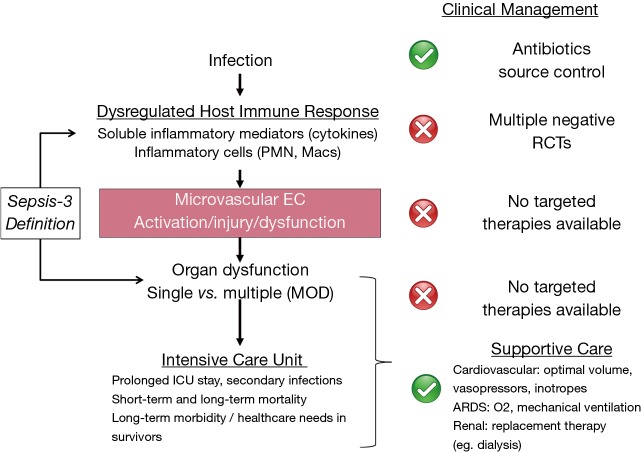Figure 1.
Sepsis is defined as a dysregulated host response to infection leading to life-threatening single or multiple organ dysfunction (MOD). The pathophysiology of septic organ dysfunction is not established, especially the potential key role of microvascular endothelial cell (EC) dysfunction. Treatment of infection and excellent intensive care unit (ICU) supportive care (√) have improved sepsis mortality, but clinical outcomes remain poor because of a lack of any pathobiology-based targeted treatment options for the key pathophysiologic features (×), particularly microvascular EC dysfunction and resulting organ dysfunction, especially MOD. ARDS, acute respiratory distress syndrome; Macs, macrophages; PMN, polymorphonuclear leukocytes; RCTs, randomized controlled trials.

